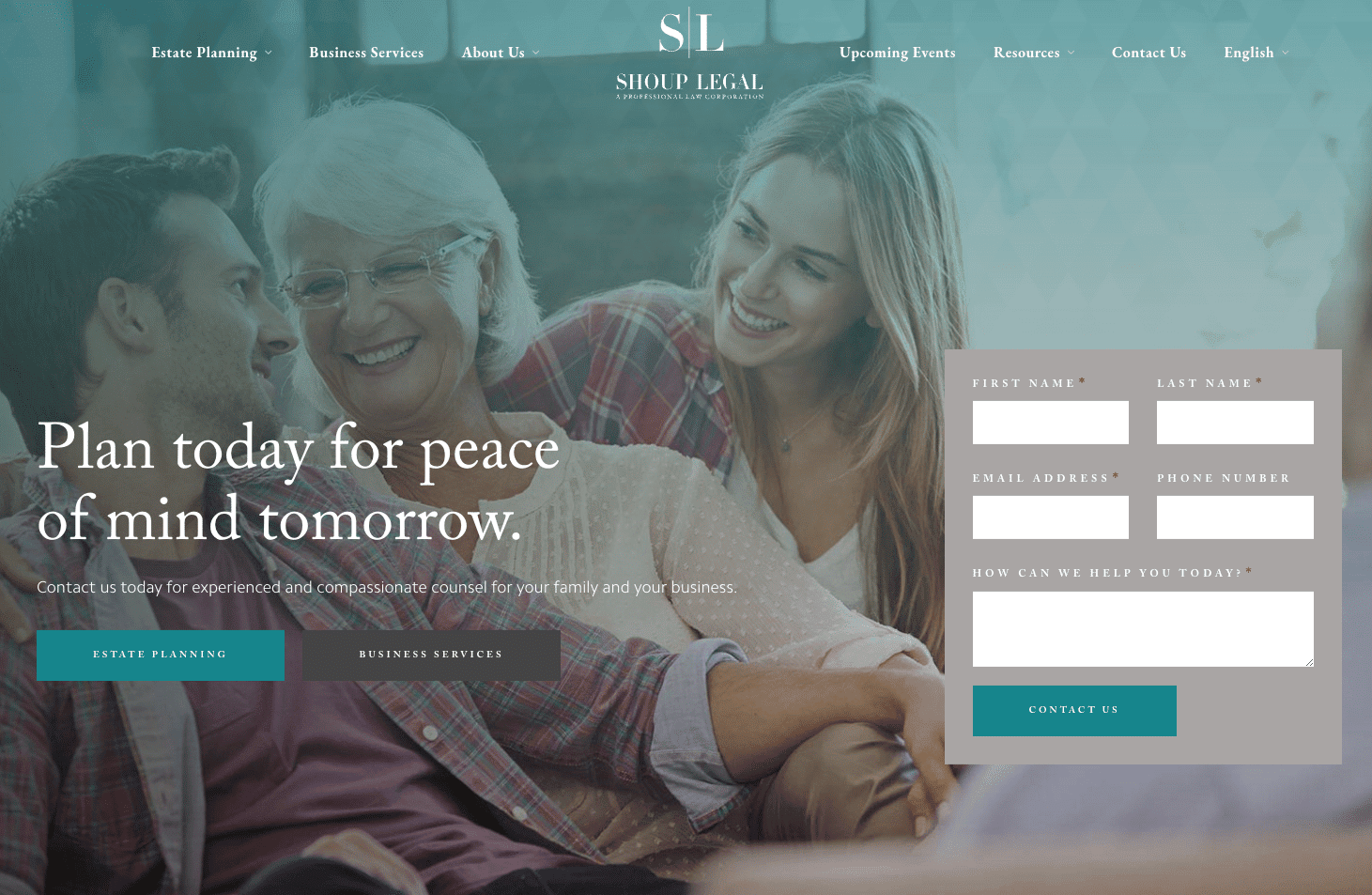Nearly every law firm today has a website, but not all websites are created equal. The best lawyer websites feature strategic calls to action (CTAs) to help generate leads for lawyers. In this article, we’ll provide a brief overview on lawyer calls to action and tips for writing the best variations to improve client conversion.
What is a Call to Action?
A CTA is a statement that urges the reader to take action, such as reaching out to your law firm for a consultation. You’ve undoubtedly seen calls to action on websites, emails, videos, digital ads, and social media in the form of buttons and hyperlinks.
Common calls to action include:
Contact us
Call now
Learn more
Read more
See how
Get started
Sign up
Subscribe now
Try free
Click here
Schedule your consultation
Download (a guide, white paper, free sample, etc.)
CTAs operate on a simple concept: If you tell people what they should do next, they’re more likely to take action. Implementing a lawyer call to action in your marketing materials can prompt more prospects to engage with your firm—pushing them down the sales funnel toward becoming clients. Ultimately, this means greater profitability for your law firm.

Tips for Writing a Strong Lawyer CTA
Developing a high-converting lawyer call to action is all about practice. Use the following six attorney CTA tips on your website and marketing materials.
1. Include an Action Verb
You want your CTA to trigger an action, so use a precise verb that explains your recommended next step. For instance, if your goal is to increase consultation requests on one of your targeted landing pages, try one of the following CTAs.
Get your free case evaluation
Schedule my free evaluation
Talk to an expert about your case
Call to discuss your case now
On the other hand, you don’t always want to go with the hard sell or push the same CTA at every opportunity. Consider the website of Fortson, Bentley and Griffin, P.A. Their homepage features a carousel of images, each with its attorney call to action. The first in the series urges visitors to learn more about the firm’s history rather than reaching out for a consultation.

2. Use Value-Centric Language
What’s in it for me? That’s the biggest question your prospects will have when looking at your marketing material. Clarify why they should take your recommended action. For example, you can use surrounding content to clarify your CTA’s value.
The Champion Firm uses this strategy by leveraging the word “free” in their homepage CTA to showcase the value to potential clients (they won’t have to pay anything for the evaluation).

3. A/B Test Various Versions
You’ll never know if you can improve your CTA unless you try. Run an A/B test, an experiment where you split your audience in half to test several CTA variants. This will determine which version of your call to action performs best.
Your IT or marketing team should be able to set up an A/B test for your law firm web design or emails. If you don’t have these resources available, you may want to try A/B testing software, such as a specialized plugin for WordPress websites.
4. Tailor to Your Law Firm Brand
Your firm has its unique look and feel—a CTA that jives with your brand will perform better. For instance, Shoup Legal positions itself as a family-friendly, compassionate estate planning firm. Their homepage focuses on helping clients achieve peace of mind, and they choose to feature a relaxed “Contact us” CTA button in a discreet color.

5. Customize by Client Type
Let’s say you’re a personal injury lawyer. You serve various clients, such as car accident victims, patients and families affected by medical malpractice, and employees injured on the job. Consider creating a webpage for each of these audiences. Include tailored content and a customized client intake form with a CTA, all powered by MyCase’s legal client intake software. Prospects are much more likely to engage with your firm if they see that you understand and can resolve their unique issue.
6. Personalize Based on Viewer Behavior
Take personalization further and customize your CTAs based on each viewer’s behavior (aka “smart” CTAs). If your content management system has audience targeting capabilities, it may be able to assess each visitor’s behavior and serve them a more targeted CTA.
For instance, new website visitors could receive an offer to sign up for your law firm's cover letters or newsletters. Return visitors could receive an offer for a free consultation since they would be warmer prospects further down the sales funnel.
The Bottom Line About CTAs
All in all, a lawyer call to action is a simple yet powerful tool that can convert prospects into clients. Leverage this guide to design strong CTAs that generate a steady stream of incoming prospects—and don’t forget to use MyCase to convert those prospects into clients and build client relationships.
Our law firm CRM and customizable intake process will transform how you manage prospective clients, as well as how to improve your legal intake process.
Book a demo of MyCase today. No commitment is required, and you’re free to cancel anytime.
About the author

Morgan MartinezSenior Content Manager
Morgan Martinez is a Senior Content Manager for leading legal software companies, including MyCase, Docketwise, and CASEpeer, as well as LawPay, the #1 legal payment processor. She specializes in writing about the latest advancements in legal technology, financial wellness for law firms, key industry trends, and more.
